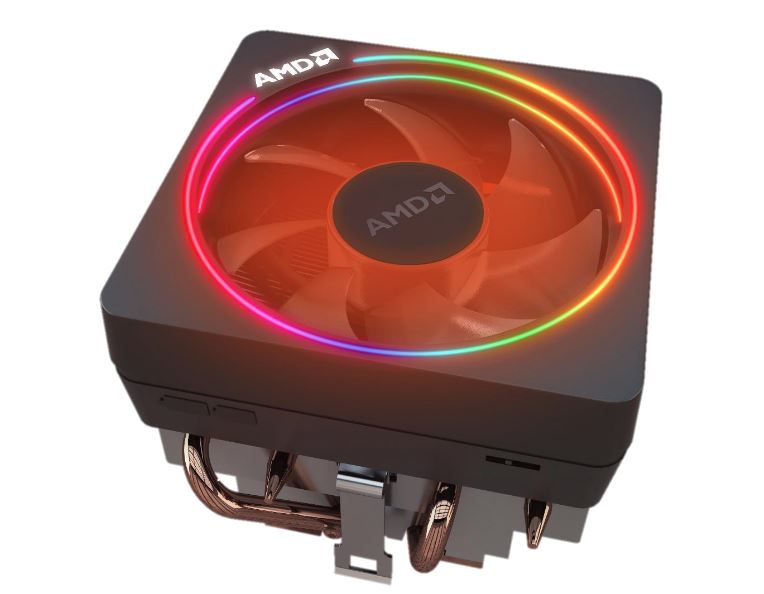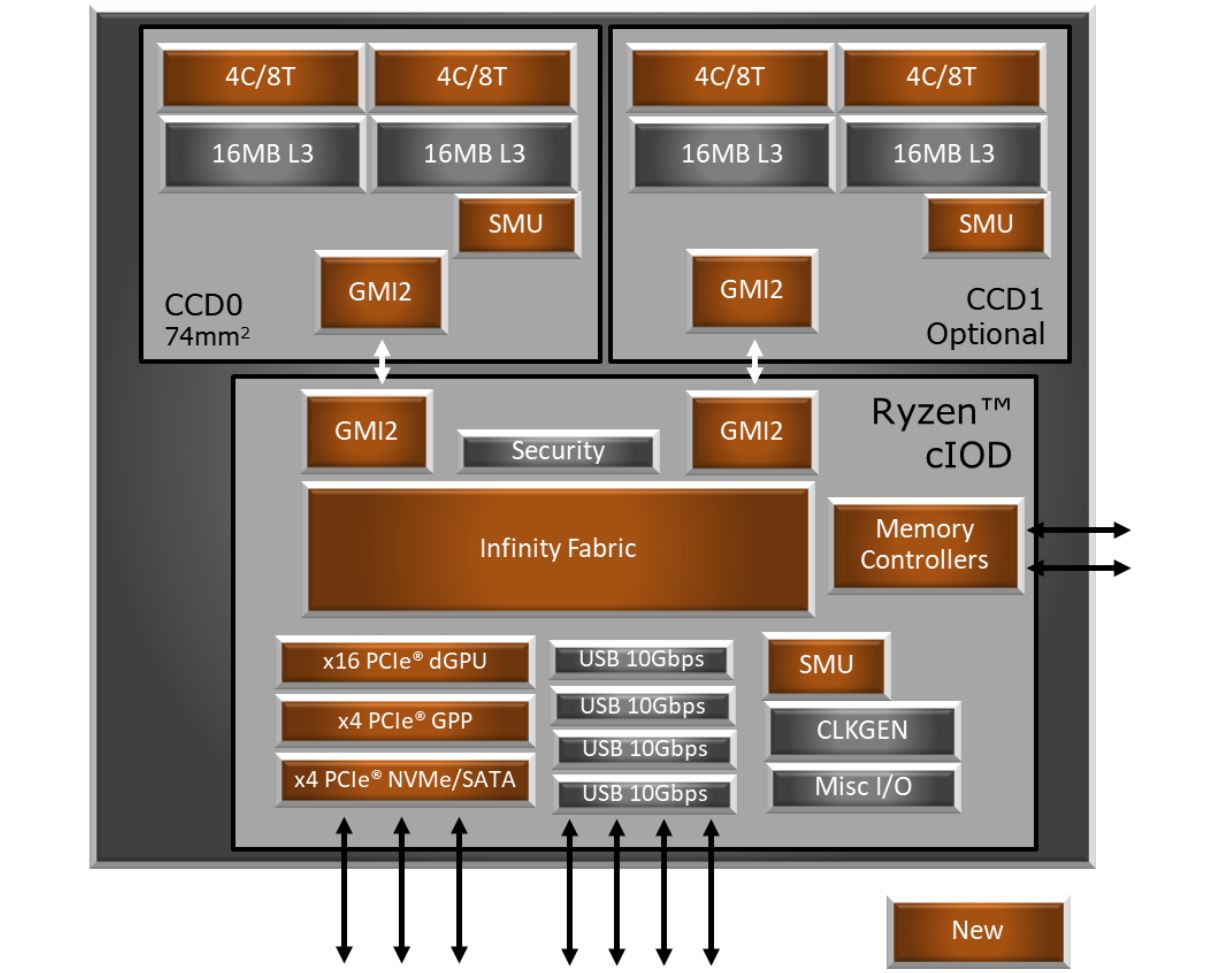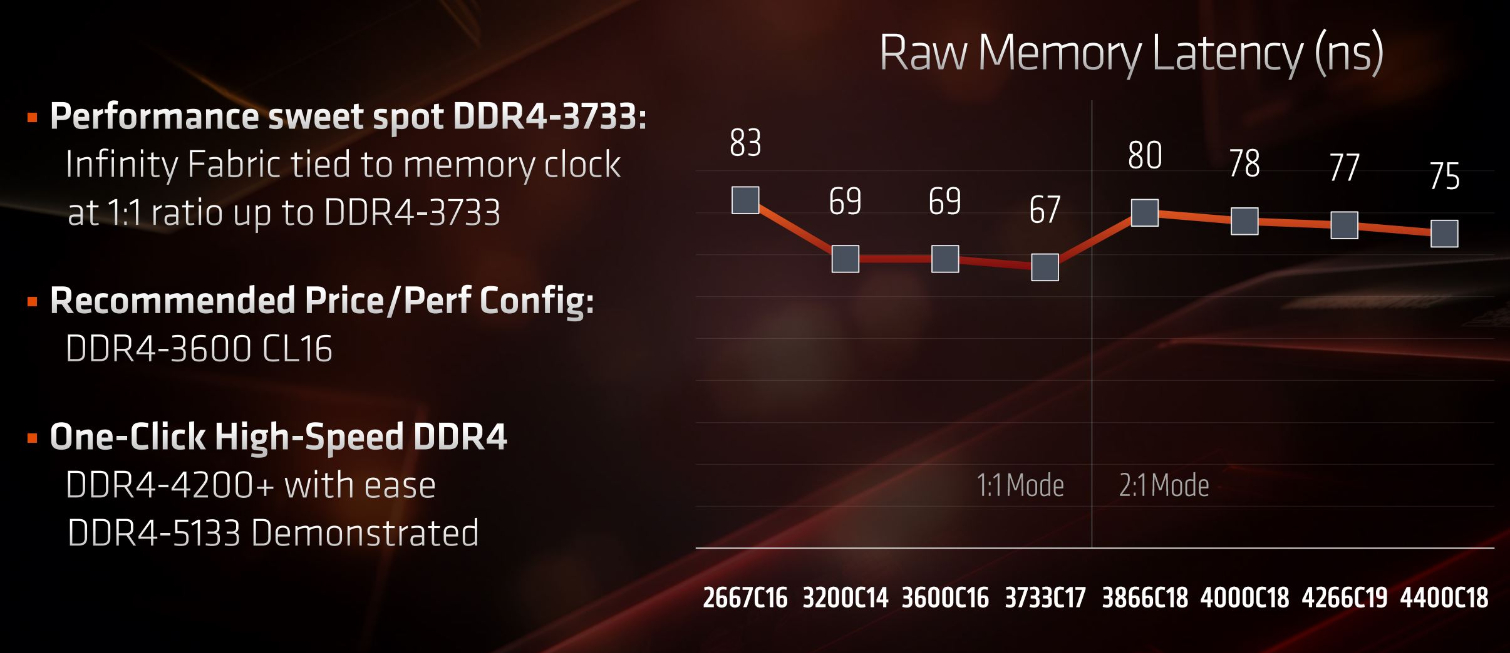Tom's Hardware Verdict
The Ryzen 9 3900X redefines our expectations for the mainstream desktop with 12 cores and 24 threads for roughly the same price as Intel’s eight-core Core i9-9900K. The extra cores deliver big gains in heavily threaded applications, and the improved architecture offers great gaming performance, too, making for an incredibly well-rounded processor. Support for the PCIe 4.0 interface is the cherry on top.
Pros
- +
Support for PCIe 4.0
- +
Bundled cooler
- +
Unlocked multiplier
- +
Compatible with X470 motherboards
- +
Indium solder
Cons
- -
Requires expensive X570 motherboards for PCIe 4.0 support
- -
Limited overclocking headroom
Why you can trust Tom's Hardware
AMD's launch of the Ryzen 3000 series processors marks an occasion that was nearly unthinkable a few short years ago: AMD has taken the process lead over Intel by fielding new 7nm processors that contain smaller and more densely-packed transistors than Intel's competing 14nm chips. The advantages of increased density come in the form of higher performance, better power efficiency, more cores, and more cache packed into a smaller area than the first-gen Ryzen models, all of which, as you can see in our CPU Benchmark Hierarchy, makes third-gen Ryzen a potent adversary for Intel both on the desktop and in the data center.
AMD paved the way for the 'Matisse' Ryzen 3000 series several years ago when it unveiled the revolutionary chiplet-based Zen microarchitecture. At the time, AMD laid out a roadmap that included a steady cadence of tick-tock-like updates interspersed with new revisions of the scalable microarchitecture. After the company's sophomore effort with the second-gen Ryzen processors, which featured a faster process paired with the same first-gen Zen design, the company is plowing forward with its Zen 2 architecture that AMD says offers up to 15% more instructions per cycle (IPC). Paired with the advantages of the 7nm process and more cores, not to mention AMD's trailblazing of the PCIe 4.0 interface on desktop platforms, the Ryzen 3000 chips promise an explosive step forward in performance.
AMD's first chips to come packing TSMC's 7nm process span the entire range of the mainstream desktop stack, but push core counts up from eight cores to 12 cores and 24 threads with the Ryzen 9 3900X we have in the lab today, upsetting the status quo and bringing mainstream platforms into what used to be the realm of the pricey high end desktop. If you're looking for something even beefier, AMD also recently released the 16-core Ryzen 9 3950X, which has taken our best CPU list by storm.
| Row 0 - Cell 0 | SEP (USD) | Cores / Threads | TDP (Watts) | Base / Boost Frequency (GHz) | L3 Cache (MB) | PCIe 4.0 Lanes |
| Ryzen 9 3950X | $749 | 16 / 32 | 105W | 3.5 / 4.7 | 64 | 24 |
| Ryzen 9 3900X | $499 | 12 / 24 | 105W | 3.8 / 4.6 | 64 | 24 |
| Ryzen 7 3800X | $399 | 8 / 16 | 105W | 3.9 / 4.5 | 32 | 24 |
| Ryzen 7 3700X | $329 | 8 / 16 | 65W | 3.6 / 4.4 | 32 | 24 |
| Ryzen 5 3600X | $249 | 6 / 12 | 95W | 3.8 / 4.4 | 32 | 24 |
| Ryzen 5 3600 | $199 | 6 / 12 | 65W | 3.6 / 4.2 | 32 | 24 |
Aside from those halo parts, AMD also has plenty of models that address the bulk of casual users, gamers, and enthusiasts, like the eight-core 16-thread Ryzen 7 3700X we also have in the lab, and a lineup of six-core 12-thread Ryzen 5 models. The Ryzen 7 3700X is particularly impressive with its combination of price and performance putting it squarely among the best gaming CPUs.
AMD is staying true to its enthusiast-friendly roots: Although you can pair the Ryzen 3000 chips with the new X570 chipset, they are also backward compatible with most AM4 socket motherboards. All of the models also come with beefy stock coolers, solder thermal interface material between the heat spreader and die to improve thermal transfer, and unlocked multipliers for easy overclocking. AMD even added support for auto-overclocking for mainstream processors. Pair that with the lower per-core pricing and the debut of the PCIe 4.0 interface for the desktop, and the Ryzen 3000 series appears to be a potent force.
AMD's ability to deliver on its optimistic roadmap in the waning light of Moore's Law is truly impressive, especially as we have become accustomed to never-ending cadences of incremental updates. But at the end of the day it all boils down to real-world performance. Let's see what the Ryzen 3000 series has in store.
Ryzen 9 3900X
| Row 0 - Cell 0 | Process | SEP / RCP (USD) | Cores / Threads | TDP (Watts) | Base Frequency (GHz) | L3 Cache (MB) | PCIe Lanes | Memory Support | iGPU | Price Per Thread |
| Intel Core i9-9920X | 14nm | $1199 | 12 / 24 | 165W | 3.5 / 4.4 | 19.25 | 16 Gen3 | Quad-Channel DDR4-2666 | No | $49.95 |
| Ryzen 9 3900X | 7nm | $499 | 12 / 24 | 105W | 3.8 / 4.6 | 64 | 24 Gen4 | Dual-Channel DDR4-3200 | No | $20.79 |
| Threadripper 2920X | 12nm | $625 | 12 / 24 | 180W | 3.5 / 4.3 | 32 | 64 Gen3 | Quad-Channel DDR4-2933 | No | $26.04 |
| Core i9-9900K | 14nm | $488 | 8 / 16 | 95W | 3.6 / 5.0 | 16 | 16 Gen3 | Dual-Channel DDR4-2666 | Yes | $61 |
Make no mistake - from a core count perspective, the $500 12-core 24-thread Ryzen 9 3900X really has no comparison on the mainstream desktop. We have to reach up to Intel's high end desktop (HEDT) platform to find a fair comparison based on core counts. Intel's Core i9-9920X slots in with 12 cores and 24-threads for $1,199, a $700 premium over AMD's Ryzen 9 3900X.
Get Tom's Hardware's best news and in-depth reviews, straight to your inbox.
There's no doubt the 3900X also blurs the line between the AMD's own HEDT Threadripper platform and the mainstream desktop: The Threadripper 1920X is AMD's only core-comparable processor. That processors has its own advantages, like access to 64 lanes of PCIe 3.0, and like the -9920X, it supports quad-channel memory. But both company's HEDT chips are much more expensive than the 3900X and require pricey HEDT motherboards.
Back in the familiar realm of the mainstream desktop, Intel's $488 Core i9-9900K serves as the 3900X's primary competitor. The -9900K comes with four fewer cores and eight fewer threads than the 3900X, marking a distinct difference in the price you pay per thread, but the -9900K does hold the clock speed advantage. AMD hopes to offset that advantage with its increased IPC throughput and the 3900X also supports the PCIe 4.0 interface with twice the bandwidth of the -9900K's PCIe 3.0 interface. You'll also notice the Core i9-9900K, known for its high power consumption and intense heat generation, has a lower 95W TDP than the 3900X's 105W rating. We can chalk that up to different measurement techniques. We'll provide extensive power and efficiency testing on the following pages to get a more accurate picture of actual power consumption.
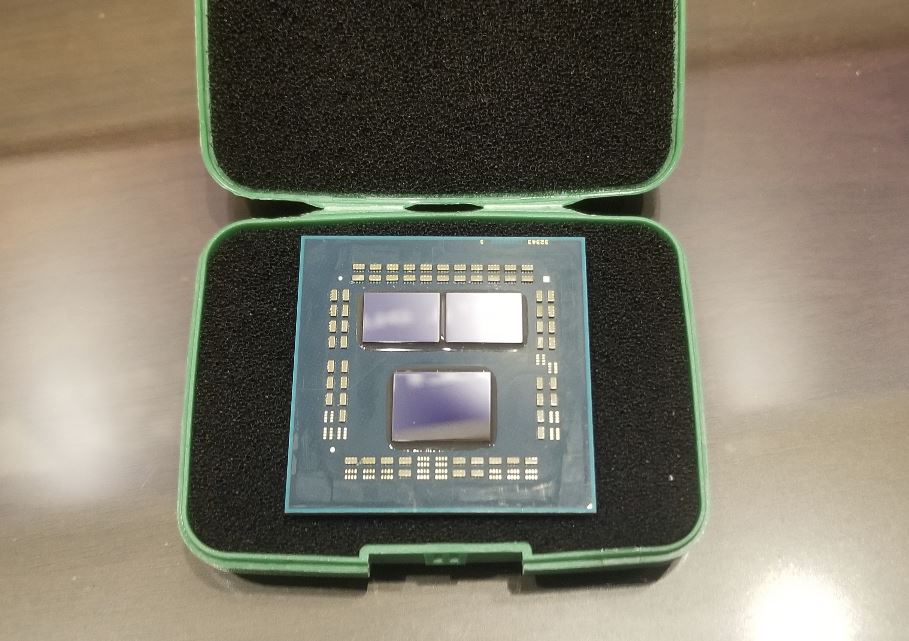
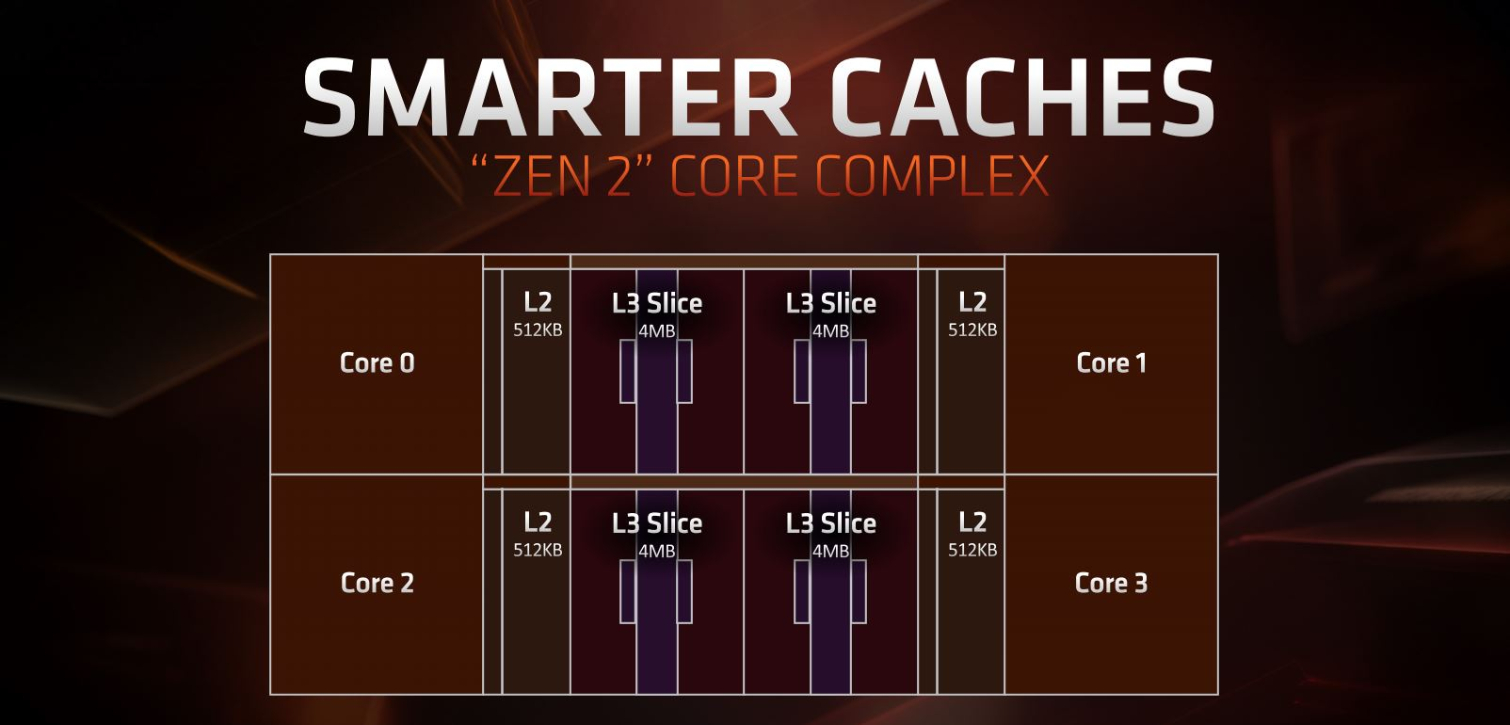
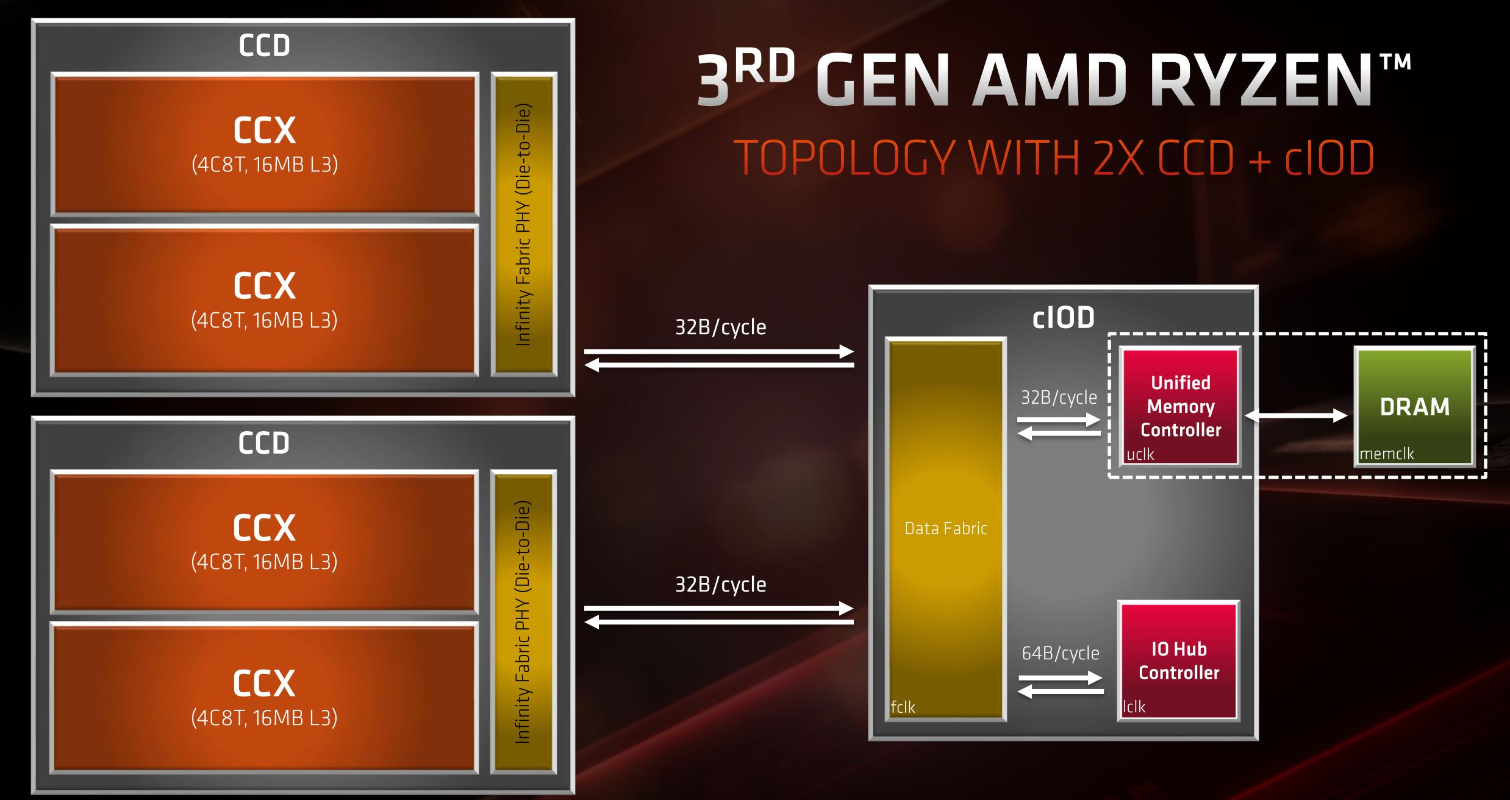
As pictured here, the 39000X comes packing AMD's Zen 2 microarchitecture spread across two small 7nm eight-core compute chiplets tied together with the Infinity Fabric interconnect via a larger 12nm I/O die (IOD). Each small 3900X compute chiplet, referred to as a CCD (Core Chiplet Die), comes with eight physical cores spread across two four-core Core Complexes (CCXes). Each CCX has 16MB of shared L3 cache, totaling 32MB of L3 cache per CCD, and 64MB of total cache for the entire chip. AMD disables two cores per CCD to create the 12-core 3900X.
Each 7nm CCD measures ~74mm2 and has 3.9 billion transistors, while the 12nm IOD is ~125mm2 and has 2.09 billion transistors. That means the 3900X comes with ~273mm2 of silicon that sports ~9.89 billion transistors.
The 3900X's larger cache comes courtesy of the denser 7nm manufacturing process, but it does have a slightly higher latency (on the order of "five or six" clocks) than the 16MB of L3 cache found on previous-generation models. However, the increased capacity allows the processor to store more data closer to the execution cores, thus increasing cache hit rates that ultimately yield more performance. AMD also decreased the size of its L1 instruction cache from 64KB with the first-gen Zen processors to 32KB for Zen 2 chips. This allowed the company to expand its microop cache, and paired with changing the L1 instruction cache from 4-way to 8-way associativity, AMD feels this provides a more balanced approach to its cache subsystem.
The -9900K's 16MB of L3 cache pales in comparison from a capacity standpoint, but cache bandwidth and latency are more important metrics. We'll put hard numbers behind the differences on the following pages.
As a sidenote, AMD now calls its combined L2+L3 cache "GameCache" to highlight to casual consumers the importance of cache to gaming performance, but we'll stick with the established terms.
Ryzen 7 3700X
The eight-core 16-thread Ryzen 7 3700X slots in at $329 and comes with a 65W TDP rating, which is significantly lower than the competing Core i7-9700K's 95W rating. You'll notice that AMD has maintained similar price points for the new models compared to the previous-gen Ryzen 7's, but we caution that pricing is a moving target for the last-gen chips.
| Row 0 - Cell 0 | Process | SEP / RCP (USD) | Cores / Threads | TDP (Watts) | Base Frequency (GHz) | Total Cache (MB) | PCIe Lanes | iGPU | Price Per Thread |
| Core i9-9900K | 14nm | $488 | 8 / 16 | 95w | 3.6 / 5.0 | 16 | 16 Gen3 | Yes | $30.05 |
| Ryzen 7 3800X | 7nm | $399 | 8 / 16 | 105W | 3.9 / 4.5 | 32 | 24 Gen4 | No | $24.94 |
| Core i9-9700K | 14nm | $374 | 8 / 8 | 95W | 3.6 / 4.9 | 12 | 16 Gen3 | Yes | $46.75 |
| Ryzen 7 2700X | 12nm | $329 | 8 / 16 | 105W | 3.7 / 4.3 | 16 | 20 Gen3 | No | $20.56 |
| Ryzen 7 3700X | 7nm | $329 | 8 / 16 | 65W | 3.6 / 4.4 | 32 | 24 Gen4 | No | $20.56 |
| Core i7-9700 | 14nm | $323 | 8 / 8 | 95W | 3.6 / 4.9 | 12 | 16 Gen3 | Yes | $40.38 |
Although third-gen Ryzen pricing is close to the current-gen processors on sale, this is far lower than the per-core pricing at the launch of the previous gen. Normalize the numbers to price-per-thread, and its clear AMD maintains a pricing advantage over Intel's lineup. But performance varies based on architecture, so the price-to-performance ratio is where the rubber meets the road.
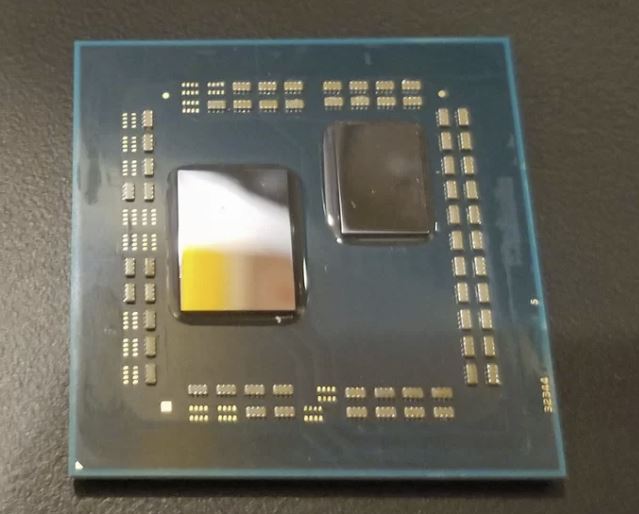
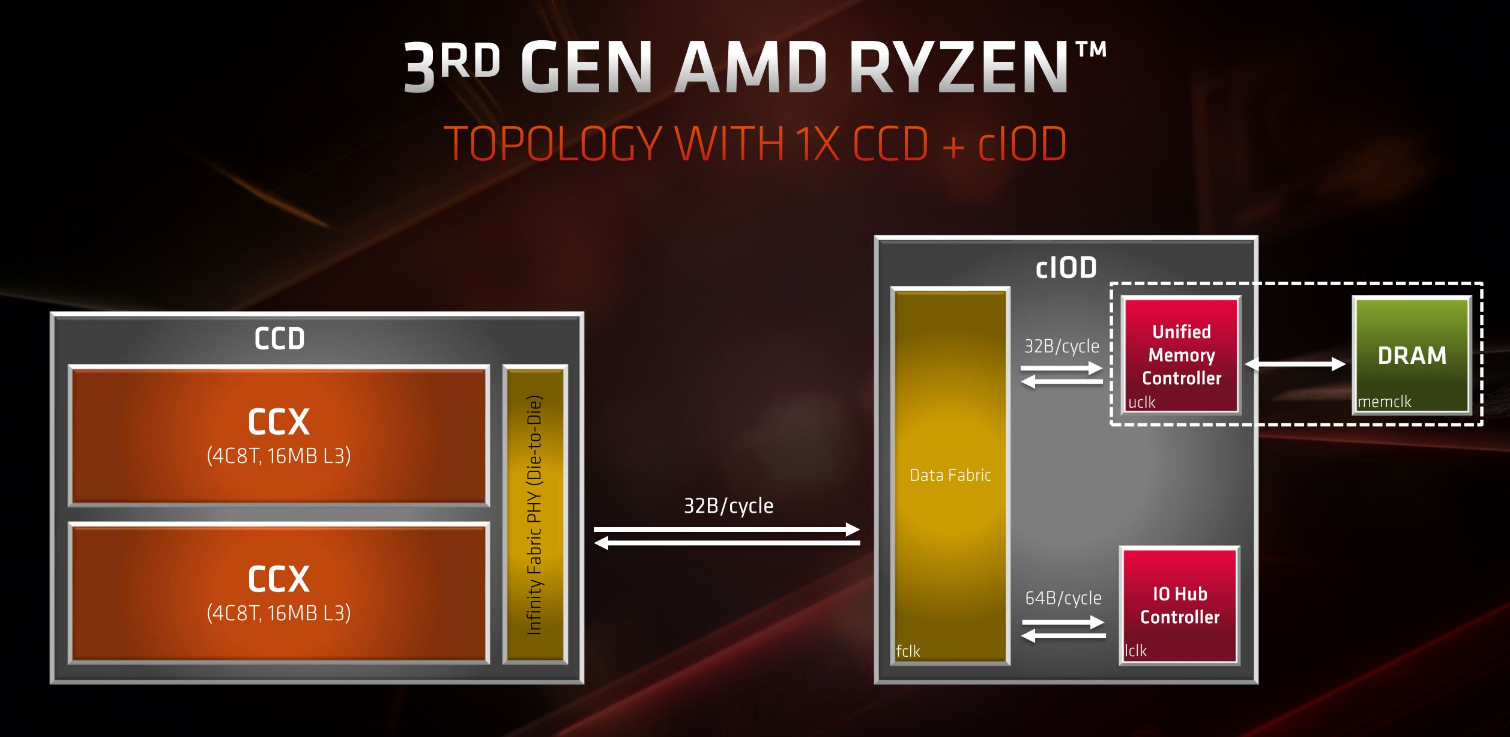
The Ryzen 7 3700X features a single CCD with all eight active cores connected to the I/O die, highlighting that the company's Zen 2 architecture is inherently scalable. Threadripper processors also come with varying numbers of compute dies, but substitute in 'dummy' dies to ensure structural rigidity and prevent crushing the integrated heat spreader (IHS) when you tighten down your cooler. The smaller surface area of the 2700X's IHS doesn't require a dummy die, so this pad is simply left unoccupied.
AMD hasn't sampled the Ryzen 7 3800X yet, which features a higher 105W rating and 3.9 / 4.5 GHz base/boost clocks, which is higher than the Ryzen 7 3700X's 3.6 / 4.4 GHz base/boost frequency. It also looks like a compelling part, so look to these pages for a review soon.
Both the Ryzen 9 3900X and the Ryzen 7 3700X come with the bundled Wraith Prism RGB cooler that features four direct-contact copper heat pipes, three independent RGB zones, switchable fan profiles, and a 39 dB(A) noise rating. The cooler is rated to dissipate 116W of waste heat in "L" mode (2800 RPM) and 124W in "H" mode (3600 RPM). Cooler Master manufactures the heat sink/fan, while AMD provides software for controlling the lighting and fan profiles. Company representatives claim the cooler represents a roughly $43 value, and that it also allows for some overclocking headroom. Intel's K-series models, in contrast, don't come with a bundled cooler.
Memory Subsystem and Overclocking, Infinity Fabric
Ryzen 3000 chips support dual-channel DDR4-3200, a step up from the previous-gen's support for DDR4-2966. That should boost performance significantly because the Zen 2 microarchitecture, like its predecessor, benefits heavily from increased memory performance (particularly in gaming).
AMD's new Zen 2 microarchitecture uses a centralized memory controller on the I/O die, which helps ensure consistent memory latency in the multi-die Ryzen 9 models. It also improves cache access latency. AMD has also overhauled the Infinity Fabric, doubling its throughput by increasing the previous-gen 256-bit interconnect to 512-bit, which facilitates access to memory and enables the PCIe 4.0 interface. AMD also instituted more fine-grained Infinity Fabric quality of service controls and claims to have reduced the amount of energy required to transfer a bit by 27%.
AMD has improved memory overclocking substantially, partly due to decoupling the Infinity Fabric from the memory clock. AMD's first-gen Ryzen processors had plenty of difficulties with memory overclocking when they first launched, but AMD has addressed those concerns with the second-gen products and has even demoed an air-cooled Ryzen platform running at DDR4-5100. We also didn't encounter any issues during our testing.
As with previous-gen Ryzen, memory overclocking confers big performance speedups for gaming. To sidestep the Infinity Fabric's maximum frequency of 2,000 MHz, which effectively constrains memory overclocking, AMD allows users to separate the memory and Infinity Fabric clock dependencies. The domains remain tied together at a 1:1 ratio up to DDR4-3600, but run at a 2:1 ratio beyond that transfer rate. This setting, which is also user-adjustable in the BIOS, improves memory bandwidth but comes with a latency penalty (~9ns). Tuners can also adjust the Infinity Fabric clock (fclk) in 33Mhz increments to get an extra kicker during overclocking. AMD says that the price/performance sweetspot will be around DDR4-3600.
As before, AMD supports up to 128GB of RAM and enables ECC support, but AMD leaves qualification and enablement of the feature up to motherboard vendors.
| DIMM Config | Memory Ranks | Official Supported Transfer Rate (MT/s) |
| 2 of 2 | Single | DDR4-3200 |
| 2 of 4 | DDR4-3200 | |
| 4 of 4 | DDR4-2933 | |
| 2 of 2 | Dual | DDR4-3200 |
| 2 of 4 | DDR4-3200 | |
| 4 of 4 | DDR4-2667 |
As seen with the first-gen Zen chips, AMD's official supported memory data transfer rates vary based on the type of DIMM (single rank or dual rank) and the number of populated channels, as outlined above.
PCIe 4.0 Comes to the Desktop
Ryzen 3000 processors support the PCIe interface on X570 motherboards, and while the chips will drop into some previous-gen AM4 motherboards, the processor will downshift into PCIe 3.0 on those platforms. AMD has also infused the new technology into its "Navi" Radeon 5000 series GPUs and worked with storage vendors to assure a supply of speedy new PCIe 4.0 SSDs. We recently had the opportunity to take an early look at PCIe 4.0 SSD performance, which you can see here.
| Row 0 - Cell 0 | Bandwidth | Gigatransfer | Frequency | Encoding |
| PCIe 3.0 | 32 GB/s | 8 GT/s | 8.0 GHz | 128b/130b |
| PCIe 4.0 | 128 GB/s | 16 GT/s | 32.0 GHz | 128b/130b |
PCIe 4.0 provides yet another advantage for performance seekers, particularly in the content creation realm, over Intel's platform, but it doesn't materially impact gaming performance (at least not yet). The new interface also comes at the cost of higher pricing for X570-equipped motherboards due to tighter signalling requirements. Those prices could recede over time as the pricing of the PCIe 4.0 component ecosystem, like switches and redrivers, benefit from economies of scale, but AMD has wisely encouraged its partners to continue offering the current-gen X470 motherboards that will now serve as a lower tier of motherboards.
AMD's new Ryzen 3000 series lineup is fully compatible with existing X470 motherboards and will operate at their full performance on the previous-gen boards, albeit at the loss of PCIe 4.0 connectivity. That shouldn't be too much of a concern for users without PCIe 4.0 devices or SSD RAID storage arrays that hang off the chipset. Fast storage arrays will certainly benefit from the faster PCIe 4.0 connection between the chipset and processor, though.
Ryzen-Specific Windows 10 Scheduler Updates
AMD worked with Microsoft to deliver on a much needed feature: A Ryzen-aware scheduler. The new scheduler arrived with the Windows 10 May update and benefits both current-gen and previous-gen Ryzen models (Threadripper and Ryzen 3000 processors).
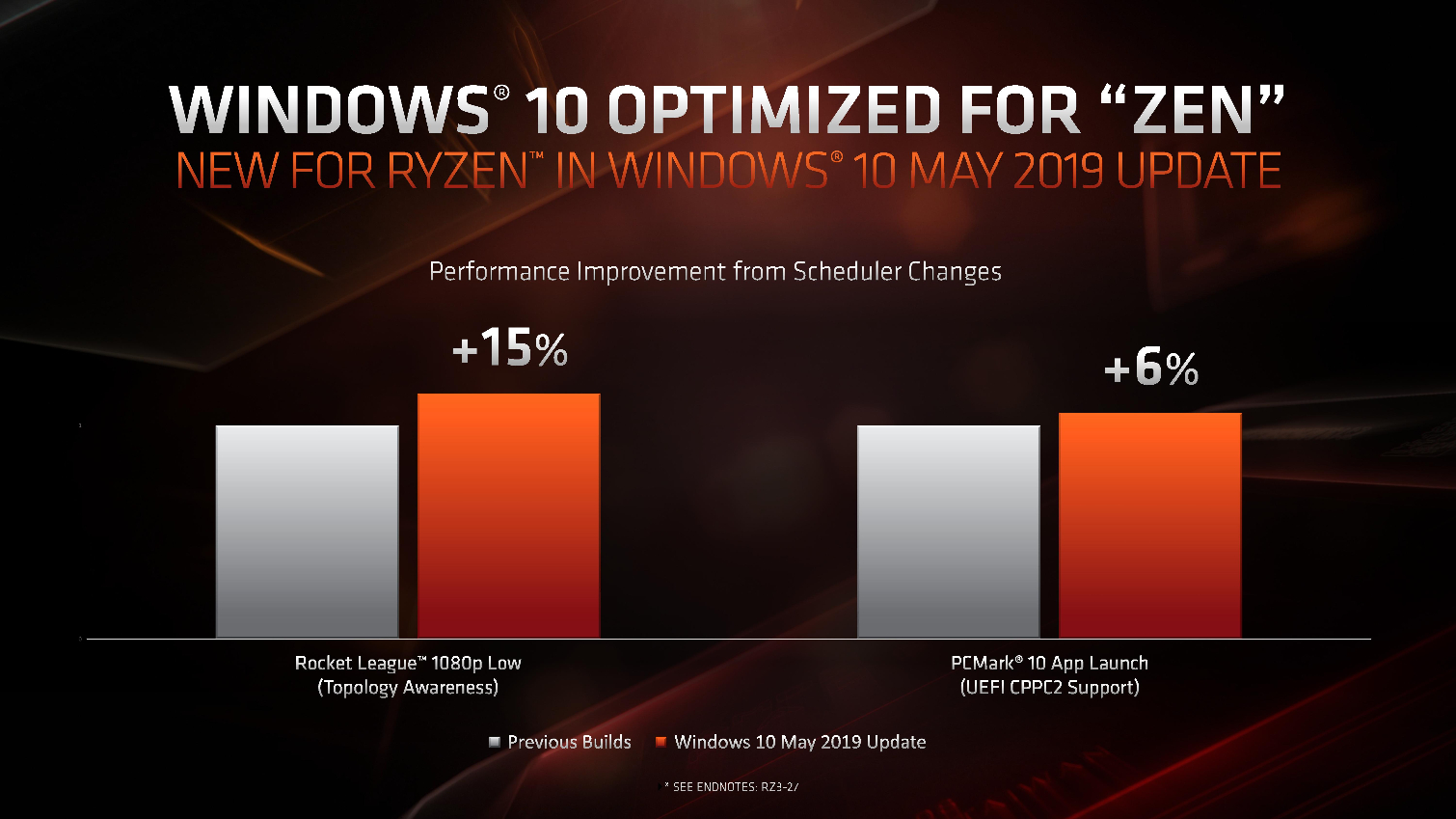
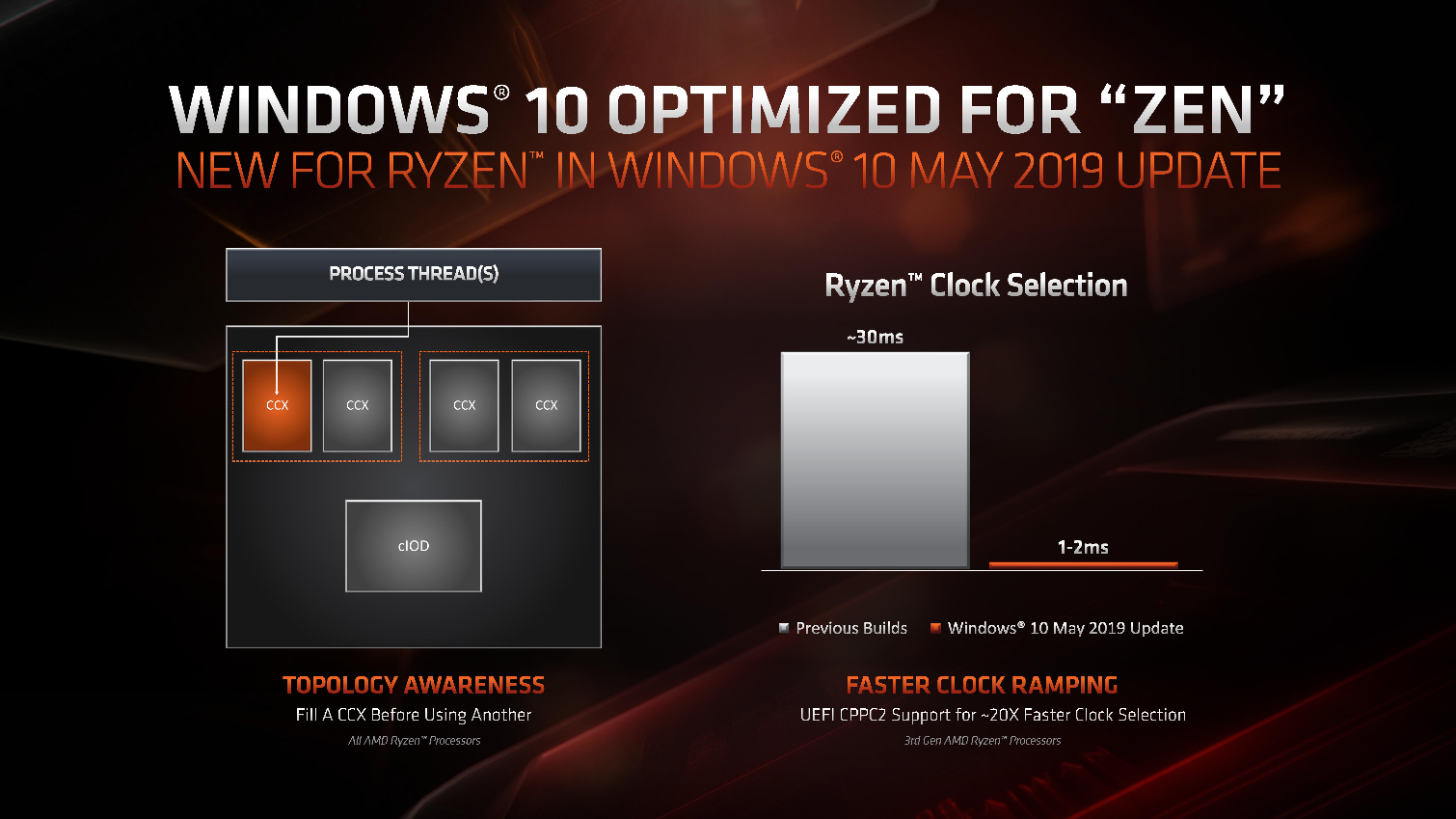
The new scheduler pins threads within a single CCX (the four-core clusters inside each CCD) before scheduling threads to other CCXes. This approach reduces latency during thread synchronizations or frequent cache accesses, thus improving performance for all existing Ryzen processors. AMD says the feature doesn't benefit all applications, but can result in significant performance improvements in those that do.
AMD also introduced its Collaborative Power Performance Control 2 (CPPC2) feature, which is a software feature that manipulates Ryzen 3000's power states from within the operating system. This is similar to Intel's Speed Shift technology and reduces power state transition latency from 30ns to 1ns, which ultimately saves power and boosts efficiency. The feature comes enabled in the latest AMD chipset drivers and the Windows 10 May update (and newer).
As before, these mainstream models don't come with integrated graphics, meaning you'll need a discrete GPU.
MORE: Best CPUs
MORE: CPU Benchmark Hierarchy
MORE: All CPUs Content
Current page: Into the 7nm Era
Next Page 7nm Process, Zen 2, and the X570 Chipset
Paul Alcorn is the Editor-in-Chief for Tom's Hardware US. He also writes news and reviews on CPUs, storage, and enterprise hardware.
-
Isokolon too bad there wasn't a 3800X included, would be interesting to see if the price tag for the 3800X over the 3700X is indeed worth itReply -
feelinfroggy777 Nice for worksation task, but disappointing it basically ties Intel in gaming if not just a tad behind.Reply -
salgado18 Reply
It tied to Intel for less money, with a great bundled cooler, and a cheaper platform (edit: and less power too). Also, unless you use a 144Hz monitor, the diference is purely synthetic. Did you expect it to be way faster than a 5 GHz Intel magically?feelinfroggy777 said:Nice for worksation task, but disappointing it basically ties Intel in gaming if not just a tad behind. -
Phaaze88 ReplyAbel Rivera1 said:Thank you so much and to be honest the only reason why I bought the 750tx Corsair psu is because it was 30$, can I ask you if the gtx770 2gb will run battlefield 1 on high?
I can't imagine it would be.Isokolon said:too bad there wasn't a 3800X included, would be interesting to see if the price tag for the 3800X over the 3700X is indeed worth it
If looking at the 3800x as a binned 3700x - that's basically what it would be - grab one if it goes on sale closer to the 3700x's price.
These chips don't overclock any better than their predecessors, which wasn't good to begin with, so whatever extra clocks you get with a 3800x will hardly be noticeable and won't be worth a $50+ price increase over 3700x. -
velocityg4 The overclocking results were disappointing. 4.1Ghz max on all cores. Given that the 3950x does a 4.7Ghz single core turbo boost and the 3900x does 4.6Hz single core turbo boost. I'd have assumed any of the Ryzen 3000 would OC to 4.6/4.7Ghz on all cores with decent air/water cooling.Reply
Power consumption: AIDA 64 seems to punish AMD a lot more than Intel. When you were using Prime95 Intel was punished a lot more. It seems the switch from Prime95 to AIDA 64 gives Intel an unfair advantage in the stress test power consumption test. While Prime95 gave AMD an unfair advantage. I'd suggest using both in reviews or find another torture test that will fully punish both AMD and Intel for a max load test. With such wild variation. I can't see how either is an accurate measure of a CPU under full load.
Example Review: https://www.tomshardware.com/reviews/intel-core-i9-9900k-9th-gen-cpu,5847-11.html
The Intel i9-9900K hit 204.6W in your old reviews stress test. This time it is only 113W.
The AMD Ryzen 2700x hit 104.7W in your old review. Now it is 133W. -
feelinfroggy777 Replysalgado18 said:It tied to Intel for less money, with a great bundled cooler, and a cheaper platform (edit: and less power too). Also, unless you use a 144Hz monitor, the diference is purely synthetic. Did you expect it to be way faster than a 5 GHz Intel magically?
It did tie Intel in gaming. It tied basically the same Intel CPUs that have been on the market since 2015 with Skylake. We are in the back half of 2019 and we see the same gaming performance that we had in 2015 mainstream CPUs.
We know AMD is cheaper and comparing clockspeeds against different architectures between Intel and AMD is silly. But it would be nice to see some tangible improvement regarding fps with CPUs. The GPU still remains king when it comes to a quality gaming build. -
delaro I've seen reviews from 5 different sites and the conclusions bounce all over the place, which makes me think there is much to do on the software optimization side. :unsure: I was expecting gaming FPS to not change all that much with many of the titles being tested have partnered or optimized around Intel.Reply -
jimmysmitty Replyfeelinfroggy777 said:Nice for worksation task, but disappointing it basically ties Intel in gaming if not just a tad behind.
Minus the ability to overclock yes tied. Most people who buy the 9900K will not be buying it to leave it stock.
velocityg4 said:The overclocking results were disappointing. 4.1Ghz max on all cores. Given that the 3950x does a 4.7Ghz single core turbo boost and the 3900x does 4.6Hz single core turbo boost. I'd have assumed any of the Ryzen 3000 would OC to 4.6/4.7Ghz on all cores with decent air/water cooling.
Power consumption: AIDA 64 seems to punish AMD a lot more than Intel. When you were using Prime95 Intel was punished a lot more. It seems the switch from Prime95 to AIDA 64 gives Intel an unfair advantage in the stress test power consumption test. While Prime95 gave AMD an unfair advantage. I'd suggest using both in reviews or find another torture test that will fully punish both AMD and Intel for a max load test. With such wild variation. I can't see how either is an accurate measure of a CPU under full load.
Example Review: https://www.tomshardware.com/reviews/intel-core-i9-9900k-9th-gen-cpu,5847-11.html
The Intel i9-9900K hit 204.6W in your old reviews stress test. This time it is only 113W.
The AMD Ryzen 2700x hit 104.7W in your old review. Now it is 133W.
Its what I wanted to know. Ryzen has always been pushed to the limit in terms of clock speed and Zen 2 is no different it seems. Little to no headroom. AnandTech was able to get it to 4.3GHz all core but with manual OCing it seems to disable boost clocking which in turn cuts 300MHz from single core performance.
As for the power consumption, the differences are probably what they prioritize. I know Prime 95 heavily uses AVX which is a power hog. Not as sure on AIDA 64 since I never used it. I always use Prime 95 and IBT for stability.
feelinfroggy777 said:It did tie Intel in gaming. It tied basically the same Intel CPUs that have been on the market since 2015 with Skylake. We are in the back half of 2019 and we see the same gaming performance that we had in 2015 mainstream CPUs.
We know AMD is cheaper and comparing clockspeeds against different architectures between Intel and AMD is silly. But it would be nice to see some tangible improvement regarding fps with CPUs. The GPU still remains king when it comes to a quality gaming build.
Its not silly to compare clock speeds as those can be advantages. Intel still clearly has a clock speed advantage and that advantage will keep them priced higher. We might see some drops but I doubt we will see enough to make it feel like Athlon 64 again.
As much crap as people give Intel for getting stuck at 14nm I have to give them props for having a 5 year old process tech beat modern process tech, especially one that's supposed to be "half" the size. I know its not quite as most 7nms out there are still less dense than Intels initial 10nm plans but still it goes to show that the nm part has become pointless and a marketing gimmick more than anything.
The only thing a CPU matters gaming wise is how long it will last before it will bottleneck the GPU. While its still early the clock speed and overclocking advantage Intel has might make their CPUs last longer in gaming than Zen 2. Only time will tell but maybe AMD will get a better process tech in a few years and finally compete like the old days. -
martinch Reply
Unless you're trying to give an indication of "performance-per-MHz" of varying architectures, yes, comparing clock speeds between differing architectures is a fundamentally invalid comparison (it's also not exactly an accurate predictor of per-core performance).jimmysmitty said:Its not silly to compare clock speeds as those can be advantages. -
feelinfroggy777 Replyjimmysmitty said:
Its not silly to compare clock speeds as those can be advantages. Intel still clearly has a clock speed advantage and that advantage will keep them priced higher. We might see some drops but I doubt we will see enough to make it feel like Athlon 64 again.
Clockspeeds between AMD and Intel are not apples to apples. Bulldozer hit 5ghz and it was a terrible CPU. Just because it could hit 5ghz, did not make a good chip.
